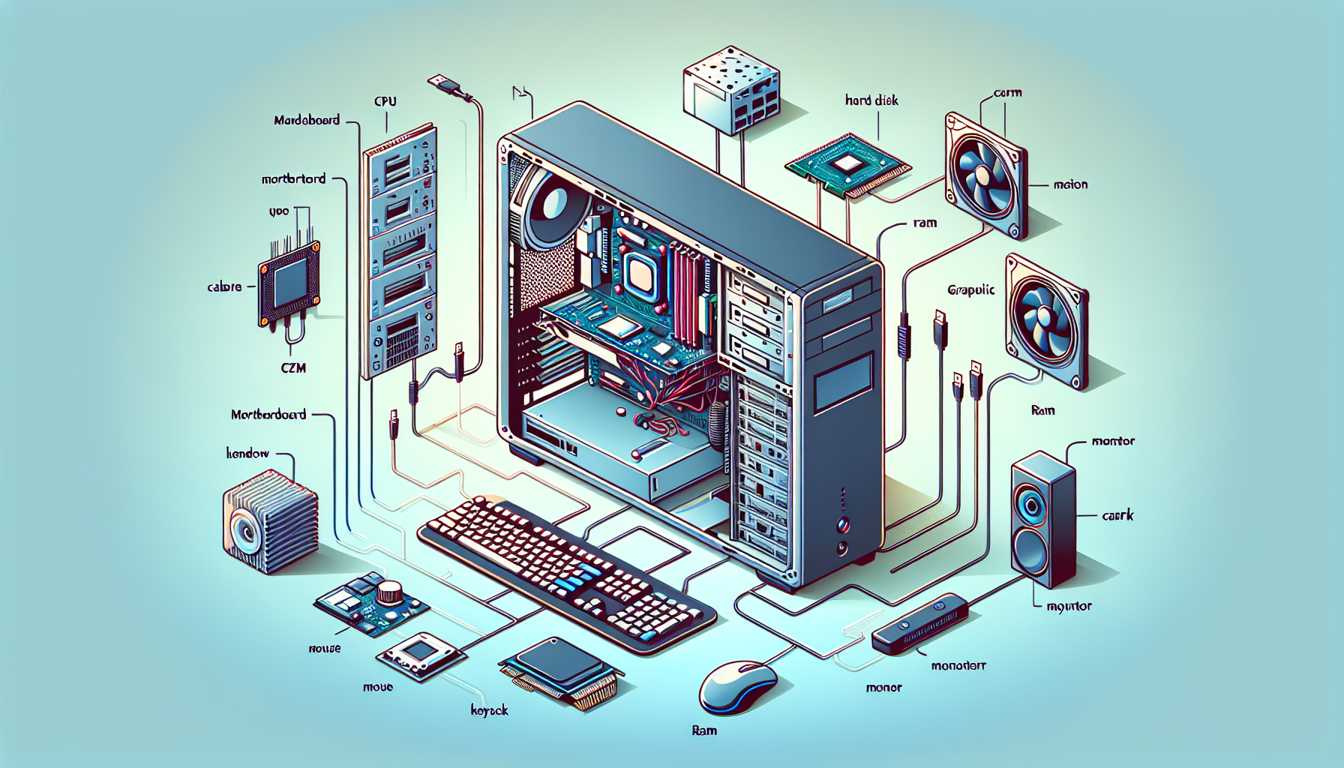
Understanding the Basics of Computer Hardware
Computer hardware forms the physical components of a computer system, essential for executing the operations dictated by software. This article delves into the fundamental elements of computer hardware, offering insights into their functionalities and roles within the broader computing ecosystem.
Central Processing Unit (CPU)
The Central Processing Unit (CPU), often referred to as the processor, is the brain of the computer. It performs the basic arithmetical, logical, and control operations of the system. A notable example is the Intel Core series, such as the Core i7 or Core i9 processors, renowned for their high performance in both consumer and professional applications. Another significant player in this field is AMD, with its Ryzen series, offering competitive performance and often at a more attractive price point.
Motherboard
The motherboard acts as the central hub for all other components. It allows communication between the CPU, memory, storage devices, and other peripheral devices. Motherboards come in various form factors, including ATX and microATX. ASUS and Gigabyte are notable manufacturers, offering motherboards with various features catering to different needs, from basic computing to high-end gaming and professional workstations.
Random Access Memory (RAM)
Random Access Memory (RAM) is the primary form of data storage used to store the working data and machine code currently in use. RAM is volatile memory, meaning it only retains data while powered on. Popular RAM manufacturers include Corsair and Kingston, offering products like the Corsair Vengeance and Kingston HyperX series, known for their reliability and performance in a variety of computing scenarios.
Storage Devices
Storage devices are used to store data permanently. There are two main types: Hard Disk Drives (HDDs) and Solid State Drives (SSDs). HDDs, like the Western Digital Blue or Seagate Barracuda, offer large storage capacities at a lower cost. SSDs, such as the Samsung 970 EVO or Crucial MX500, provide faster data access speeds and are more durable but come at a higher price.
Graphics Processing Unit (GPU)
The Graphics Processing Unit (GPU) is responsible for rendering images, video, and animations. It's particularly crucial for tasks like gaming, video editing, and graphic design. NVIDIA and AMD are the leading manufacturers in this domain. NVIDIA’s GeForce RTX series, including the RTX 3080, is popular among gamers and professionals for its superior performance. AMD’s Radeon RX series also provides competitive options.
Power Supply Unit (PSU)
The Power Supply Unit (PSU) converts electrical power from an outlet into usable power for the internal components of the computer. Reliable PSU brands include EVGA and Seasonic, offering products like the EVGA SuperNOVA and Seasonic FOCUS series, known for their efficiency and stability.
Cooling Systems
Cooling systems are crucial for maintaining optimal temperatures for hardware components. This includes heat sinks, fans, and liquid cooling systems. Brands like Cooler Master and Noctua are renowned for their efficient cooling solutions, with products like the Cooler Master Hyper 212 and Noctua NH-D15 being popular among PC builders.
Cases and Peripheral Devices
The computer case encloses and protects the components and comes in various sizes and styles. Peripherals include input devices like keyboards and mice, and output devices like monitors and printers. Logitech and Dell are prominent manufacturers, offering a wide range of products catering to different user preferences.
Conclusion
Understanding the basics of computer hardware is essential for anyone looking to build, upgrade, or simply comprehend how computers work. Each component plays a vital role, and advancements in technology continue to enhance their capabilities, offering more power, efficiency, and features to meet the growing demands of users.

